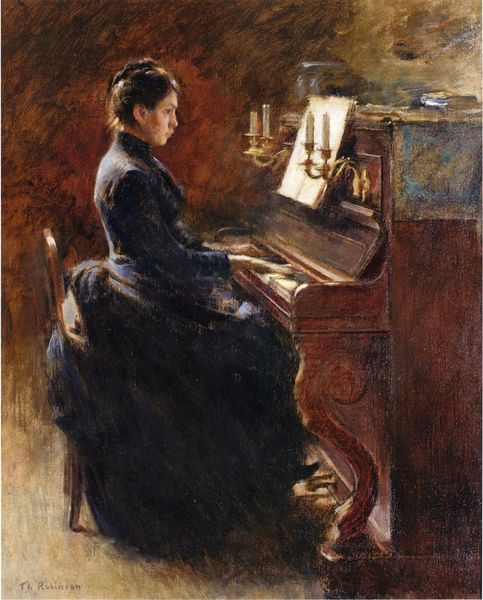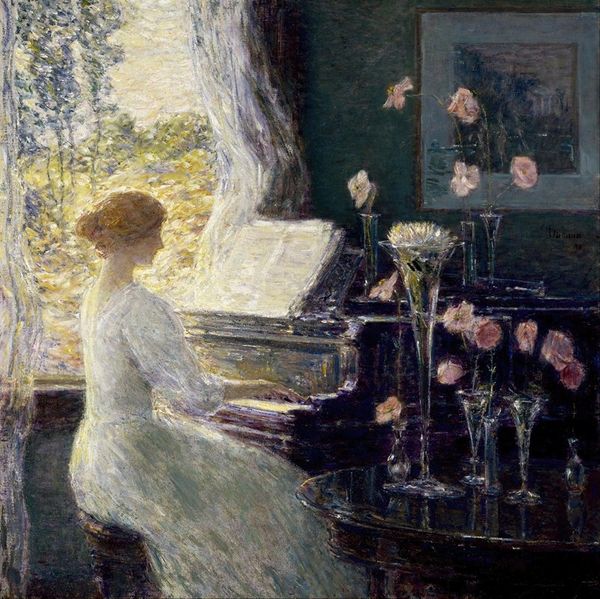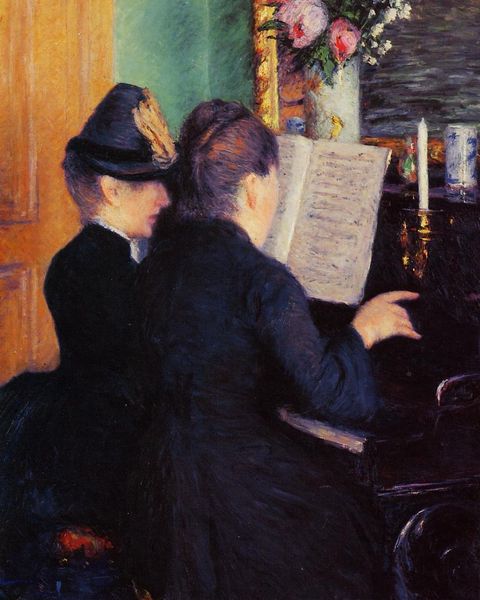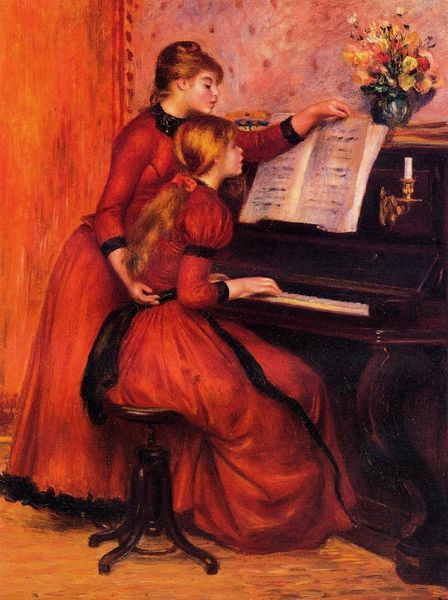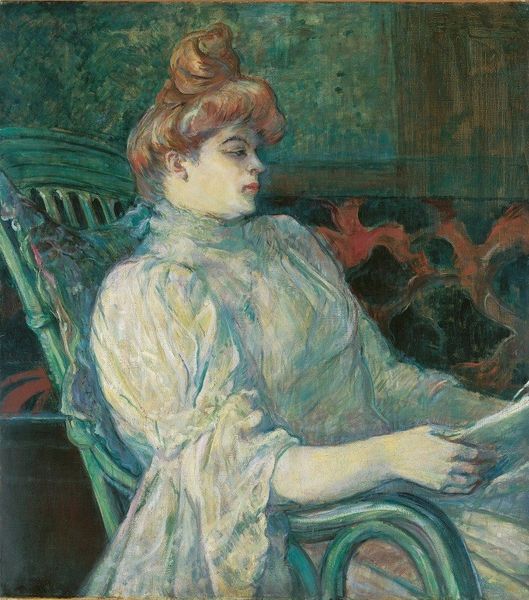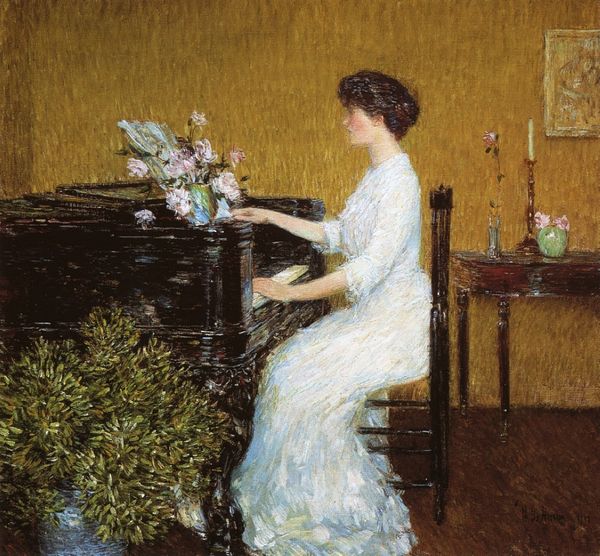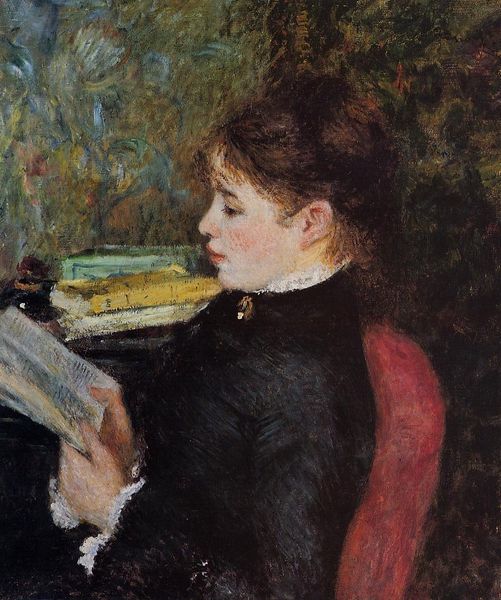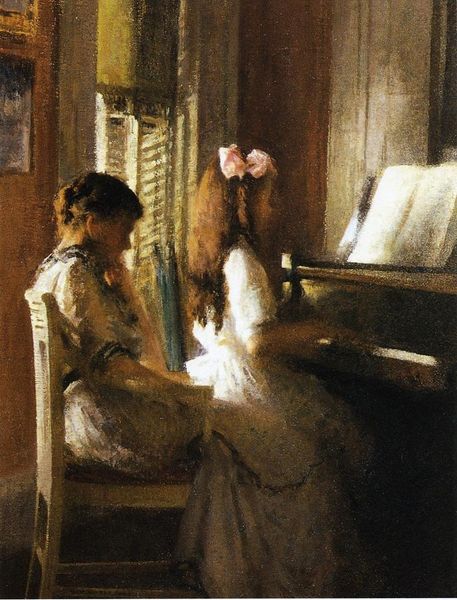
painting, oil-paint
#
portrait
#
painting
#
impressionism
#
oil-paint
#
oil painting
#
genre-painting
#
lady
#
portrait art
#
fine art portrait
#
expressionist
Copyright: Public domain
Childe Hassam made this painting with oils on canvas, a very traditional medium. The visible brushstrokes are a key element in understanding Hassam’s work, reflecting an engagement with the materiality of paint itself. He builds up a very palpable surface, where the tactile quality of the paint becomes part of the image. This is how the Impressionists worked in general: using an aesthetic of loose, broken brushwork to conjure up an impression, rather than a perfect likeness. It’s a way of working that implicitly acknowledges that a painting is just pigment on cloth – not a window onto the world. The very notion of ”finish” in painting was called into question. The labor-intensive, polished surfaces of academic painting were seen as a bankrupt tradition; instead, something more vital and immediate was needed. Looking closely at the painting’s surface, we see an artist unafraid to leave traces of the hand. It is a reminder that even the most seemingly straightforward images are made from real materials, worked by real people. This acknowledgment bridges a gap between art and craft, connecting the finished object to its origins in the studio.
Comments
No comments
Be the first to comment and join the conversation on the ultimate creative platform.


